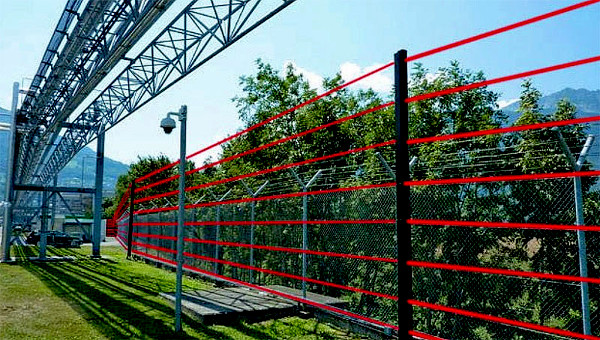NEW DELHI: The Navy is going in for a comprehensive upgrade of the perimeter security of its major air stations around the country to protect its valuable assets, including the MiG-29K fighter jets and Poseidon-8I long-range maritime patrol aircraft, in a move that comes three years after terrorists attacked the Pathankot airbase.
Sources say the Navy inked a Rs 700 crore contract for the naval airfield integrated security system with defence PSU Bharat Electronics last week. But the contract for the much larger project to enhance security at the 54 main flying bases of IAF, which is likely to cost Rs 150 crore per airbase, is still some distance away from being finalized.
The Navy’s integrated security system will include “smart fences” with CCTV cameras, infra-red devices, motion-detectors, anti-penetration, thermal and other sensors, backed by drones and other surveillance devices.
“This comprehensive multi-layered security system, with real-time monitoring through state-of-the-art command and control centers, will help guard the naval air stations much better against terror attacks,” said a source.
The security system will be in place at the naval air stations in Goa (INS Hansa), Mumbai (INS Shikra), Arakkonam (INS Rajali) and Visakhapatnam (INS Dega) by January 2020. Port Blair (INS Utkrosh) and Kochi (INS Garuda), in turn, will get it by July 2020.
While naval air stations house a variety of helicopters, drones and Dornier-228 patrol aircraft, INS Hansa also has 45 MiG-29K jets that operate from aircraft carrier INS Vikramaditya as well as five IL-38 patrol aircraft.
The Navy’s eight P-8I aircraft, packed with weapons and sensors to hunt enemy submarines, in turn, are based at INS Rajali in Tamil Nadu.
After the eight P-8Is were inducted in 2013-2015 under a $2.1 billion
deal, the base is slated to get another four such aircraft by 2021-2022
for another $1 billion.
The series of high-impact terror strikes on military bases and camps,
from Pathankot and Uri to Nagrota and Akhnoor in recent years, has
exposed their lack of proper perimeter security infrastructure, upgraded
standard operating procedures, regular security audits and seamless
coordination between intelligence and security agencies.
The Lt-General Philip Campose (retd) committee, which was set up
after seven military personnel were killed in the terror strike on the
Pathankot airbase in January 2016, in fact had held there were gaping
holes in the existing security set-up of most military bases around the
country, as was reported by TOI earlier.
The committee had recommended several measures, ranging from installation of modern “access-control, perimeter security-cum-intrusion detection systems” to providing new weapons, bullet-proof jackets and night-vision jackets to personnel guarding the bases.
Source:ToI
Image Courtesy:Perimeter Security
You may also like
-
IAF Aircraft Set Course For Exercise Eastern Bridge VII At Oman
-
IAF Set To Host The Indian Defence Aviation Exposition-II At Jodhpur
-
Dot Simplifies Approval Processes For Telecom Licenses And Wireless Equipment
-
Defence Secretary to co-chair 5th India-Philippines Joint Defence Cooperation Committee meeting in Manila
-
Simultaneous Launch Of ‘malpe And Mulki’, Fourth And Fifth Ships Of Asw Swc (Csl) Project
